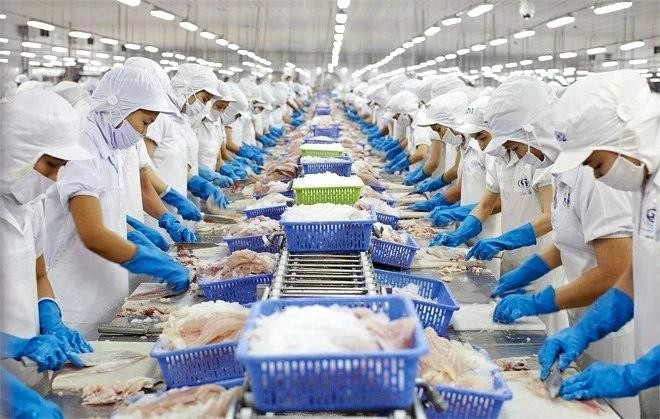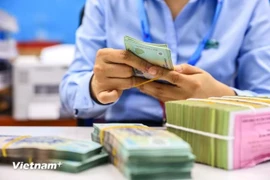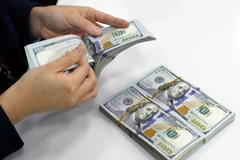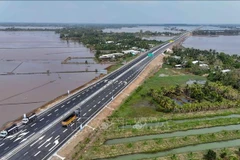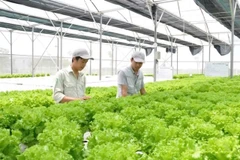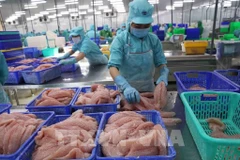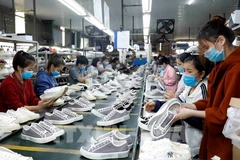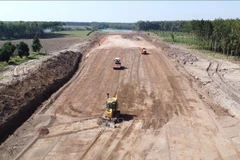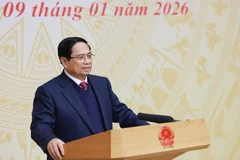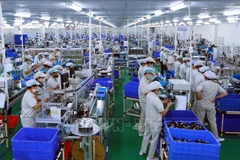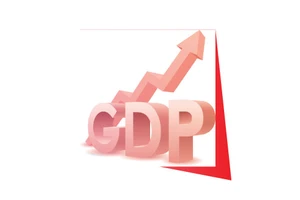Hanoi (VNA) - Vietnam is likely to secure an annual growth of 8% in 2025, which could grow to double-digit levels in 2026-2030, according to Suan Teck Kin, executive director of Global Economics and Markets Research at Singapore-based United Overseas Bank (UOB).
The economist stated that the country’s strong growth momentum, with a 7% expansion in 2024, provides a solid foundation for realising these goals.

Be cautious with tariff policies
Suan Teck Kin said that achieving these targets will be a significant challenge. Among the risks, the US tariff policies could impact one of Vietnam's key growth drivers, which is international trade.
Vietnam is largely dependent on international trade, with exports accounting for 90% of the country’s GDP, the second highest in ASEAN after Singapore at 174%, he stressed.
In addition, the US is Vietnam’s largest export market, making up 30% of its total export turnover. Therefore, if the US imposes tariffs on Vietnamese goods, the manufacturing and service sectors would be significantly affected.
Vietnam's strong GDP performance in 2024 was driven primarily by trade, with exports rising 14% after a decline in 2023. Additionally, FDI disbursement hit a record high of 25.4 billion USD in the year, up from 23.2 billion in 2023.
According to the expert, export demand may decline due to a slowdown in global economic activity, thus impacting GDP growth. The semiconductor cycle is also weakening after a period of strong growth in 2024, affecting the country’s high-tech exports.
Vietnam's PMI declined for two consecutive months (December 2024 and January 2025), indicating a possible slowdown in orders and a contraction in manufacturing activity.

Additionally, FDI inflows may slow, as businesses consider shifting to countries less likely to face US tariffs.
Key solutions suggested
According to the UOB Bank expert, there are several sectors Vietnam can focus on to increase the chances of achieving a high growth rate of 8% in 2025 or even double digits in the next five years. However, the growth rate needs to remain stable to avoid overheating and resource waste.
Suan Teck Kin suggested Vietnam boost public investment to support growth and to cushion declines from export and manufacturing activities.
He noted that the country faces a significant infrastructure gap, while capital formation expenditure accounts for only 30% of GDP, much lower than China’s 41%.
Moreover, Vietnam's fiscal policy appears overly cautious at this stage of development, as the Government aims to reduce the public debt-to-GDP ratio from the current 35% to 31% by 2029.
To boost public investment, it may be necessary to increase borrowing and employ financial leverage, the economist said, adding that another solution is to accelerate public investment disbursement.
According to the economist, accelerated disbursement drives short-term growth and promotes long-term productivity after project completion.
In his view, it’s encouraging news that the National Assembly has recently approved an 8-billion-USD railway project connecting China and Vietnam, and fast-tracked the North-South Expressway expansion. However, he also highlighted the importance of investing in artificial intelligence (AI), data, energy and water resources to support sustainable long-term growth in the future./.
